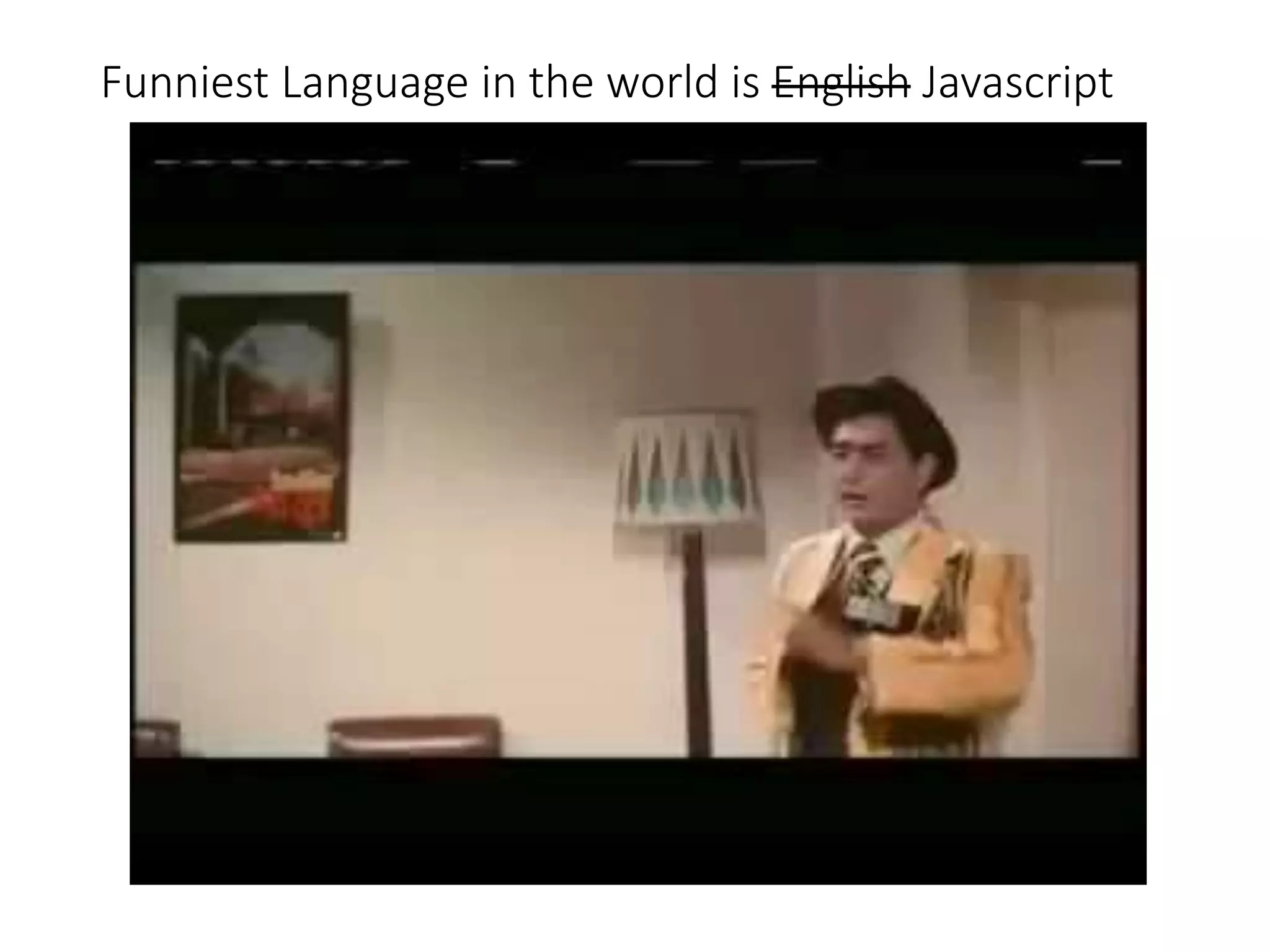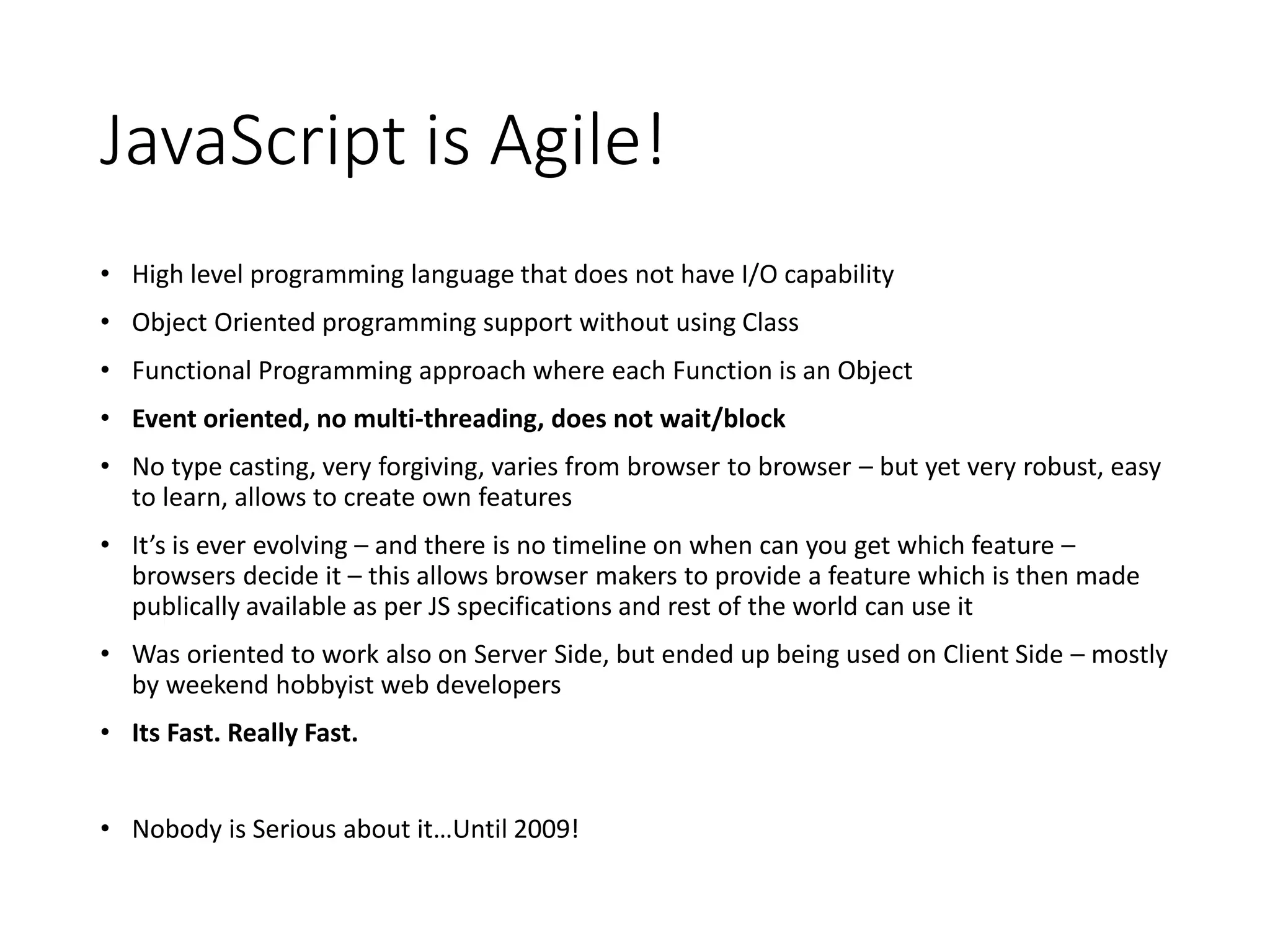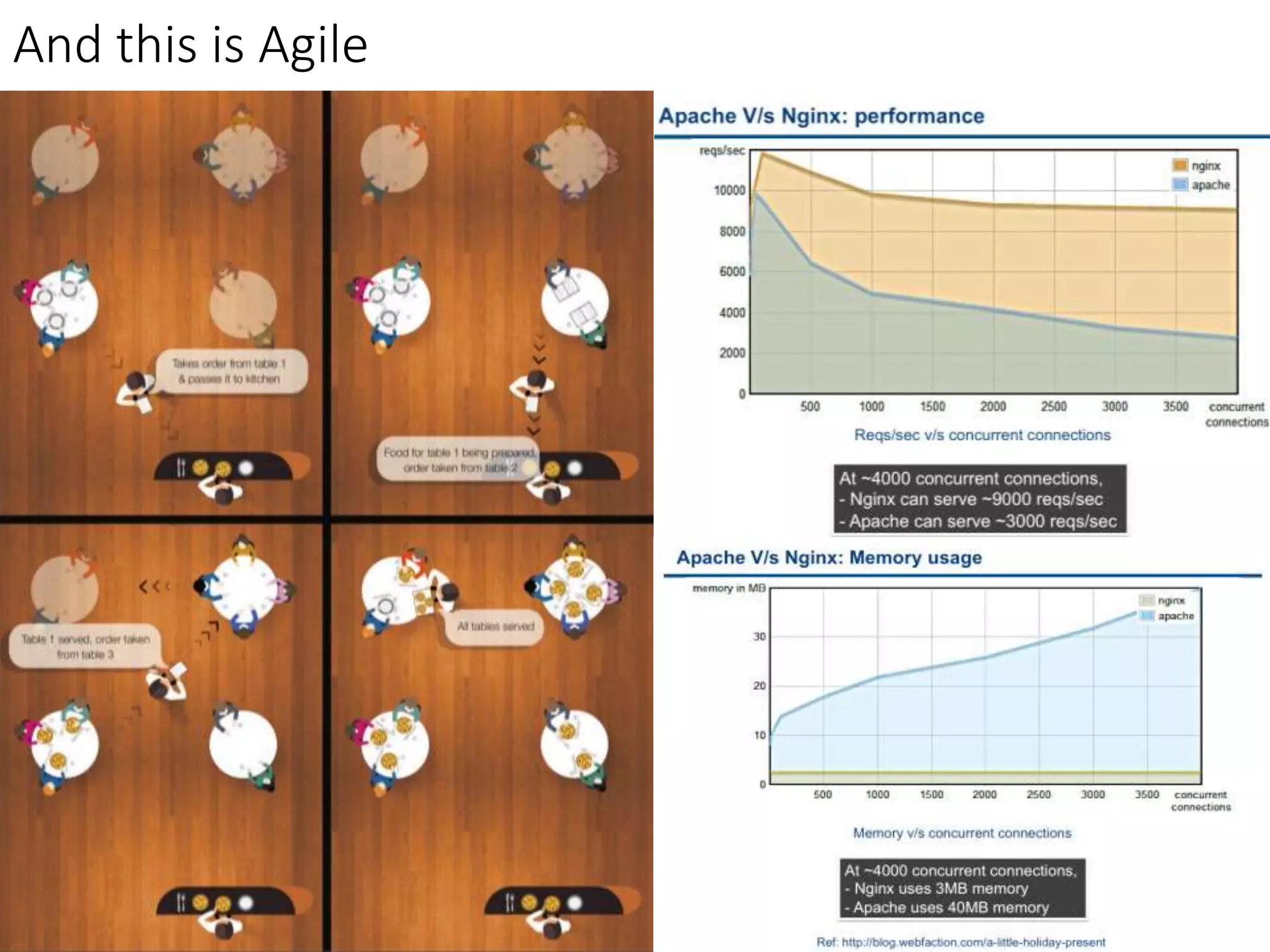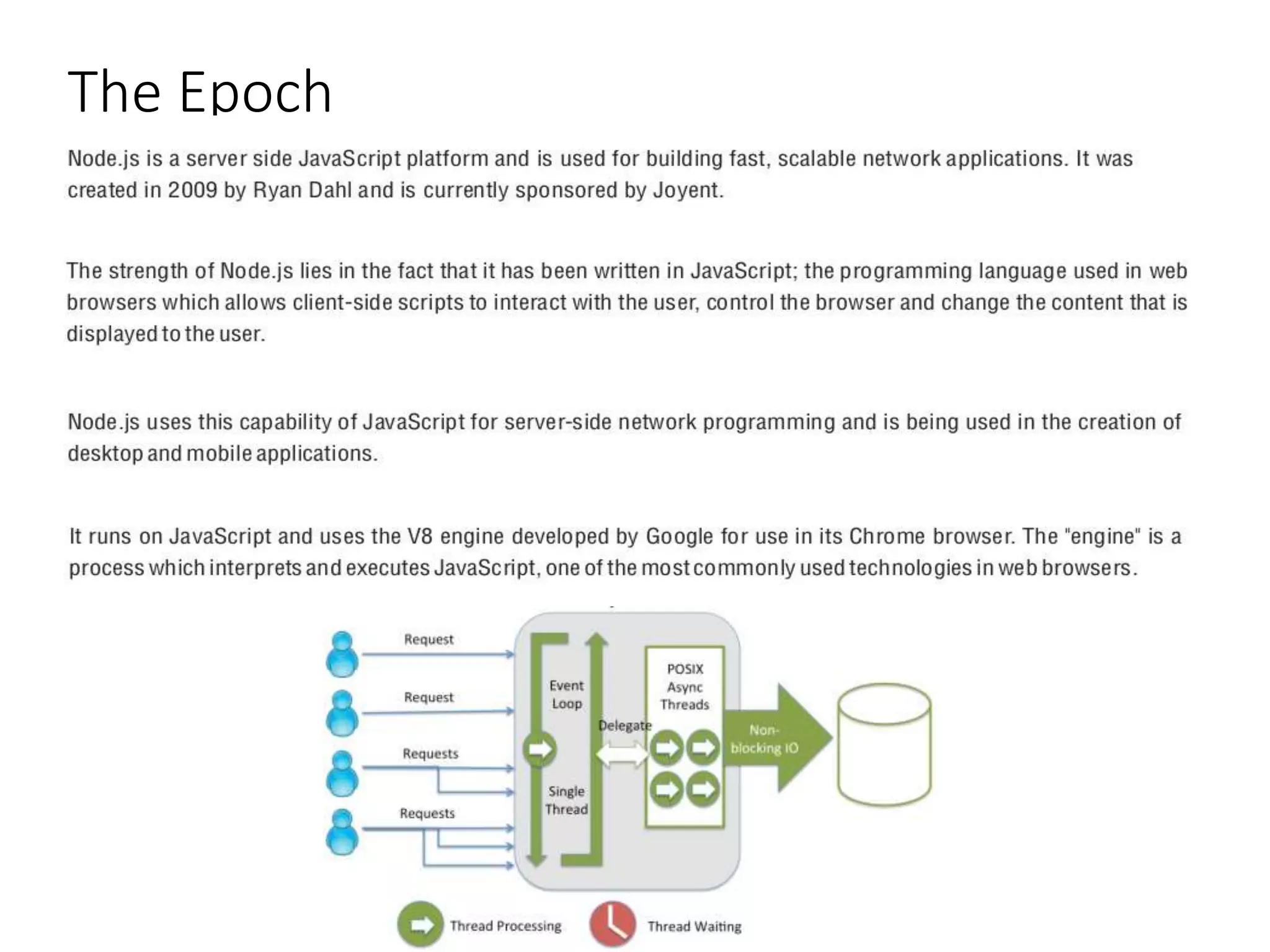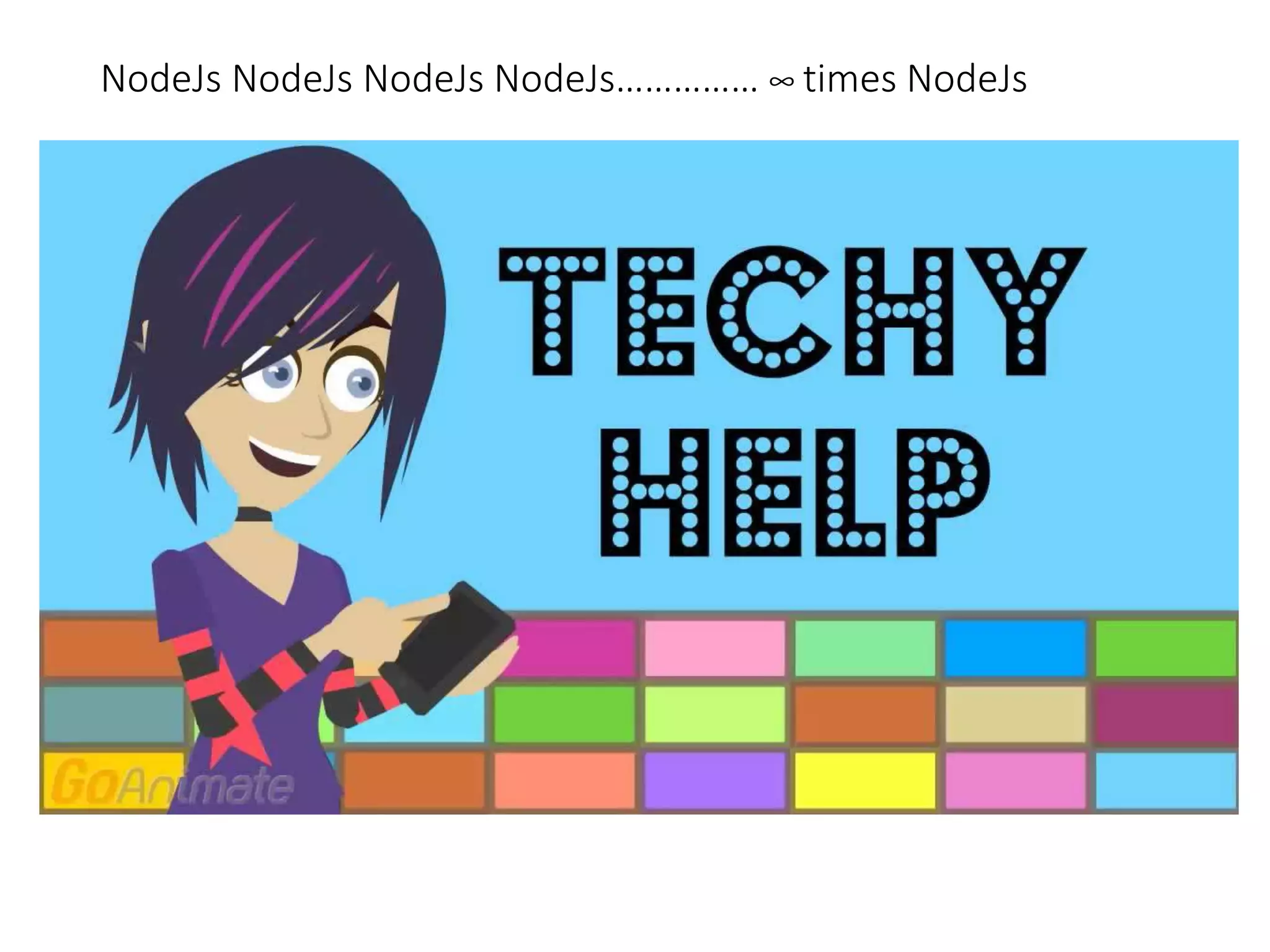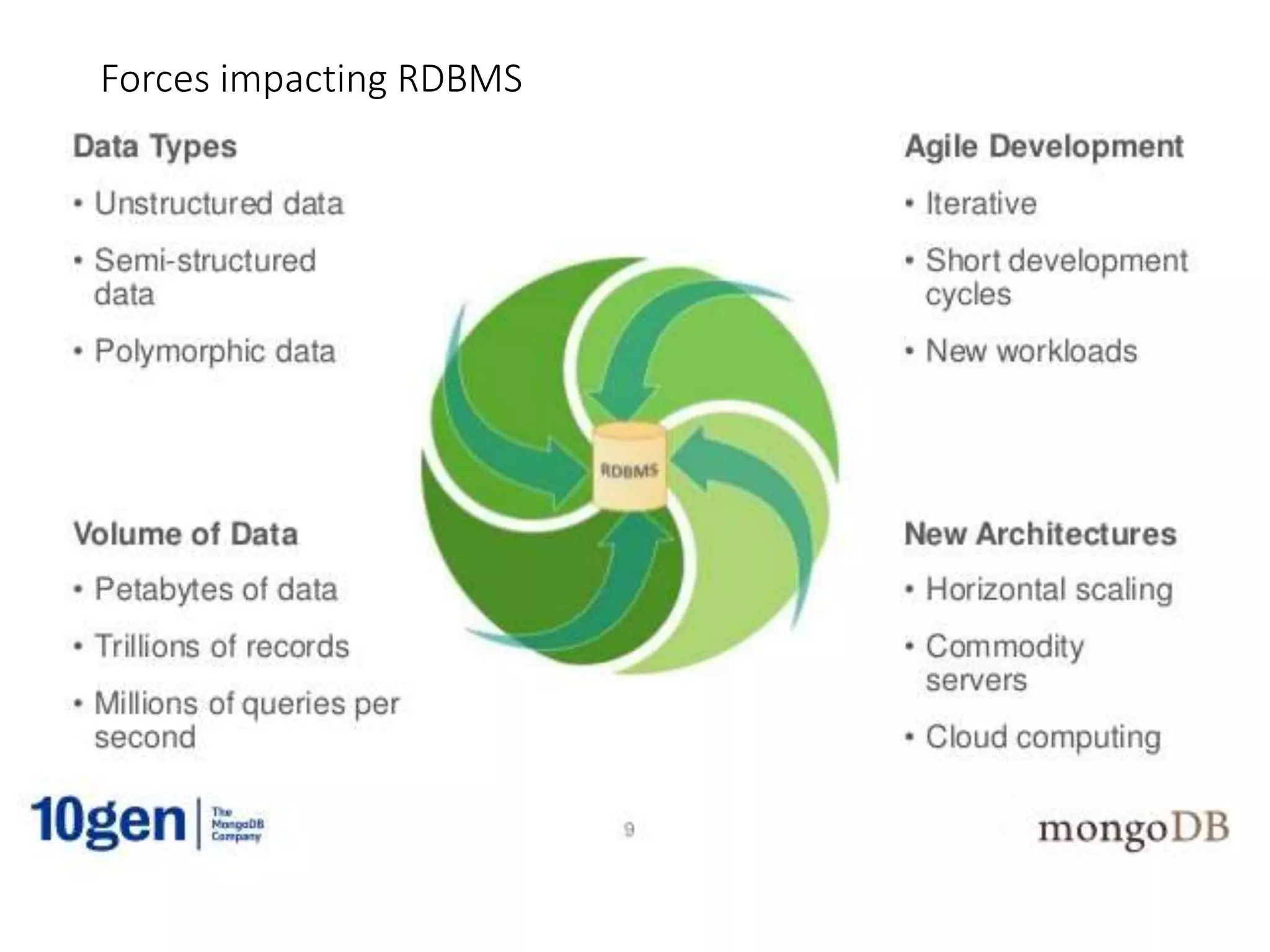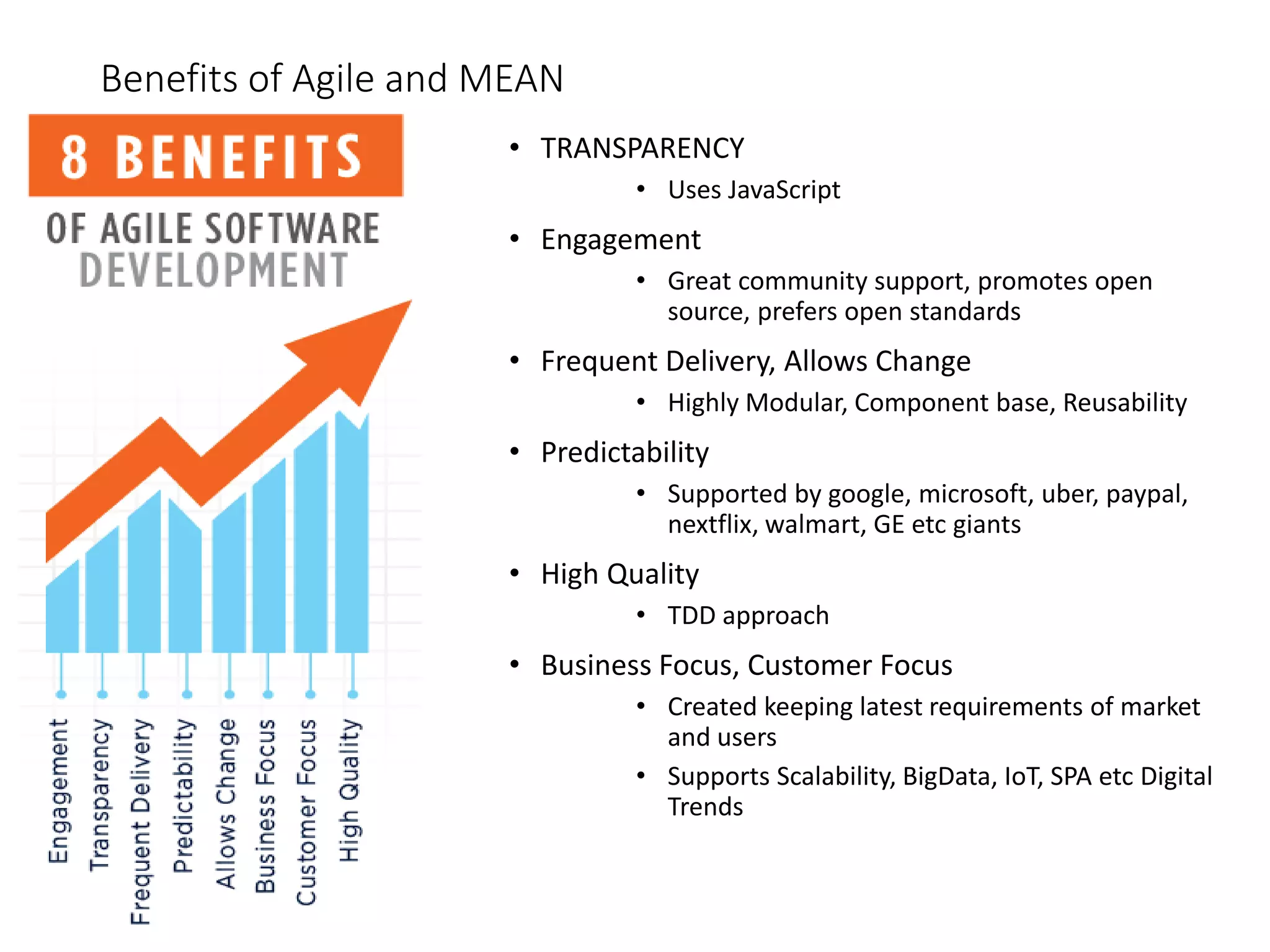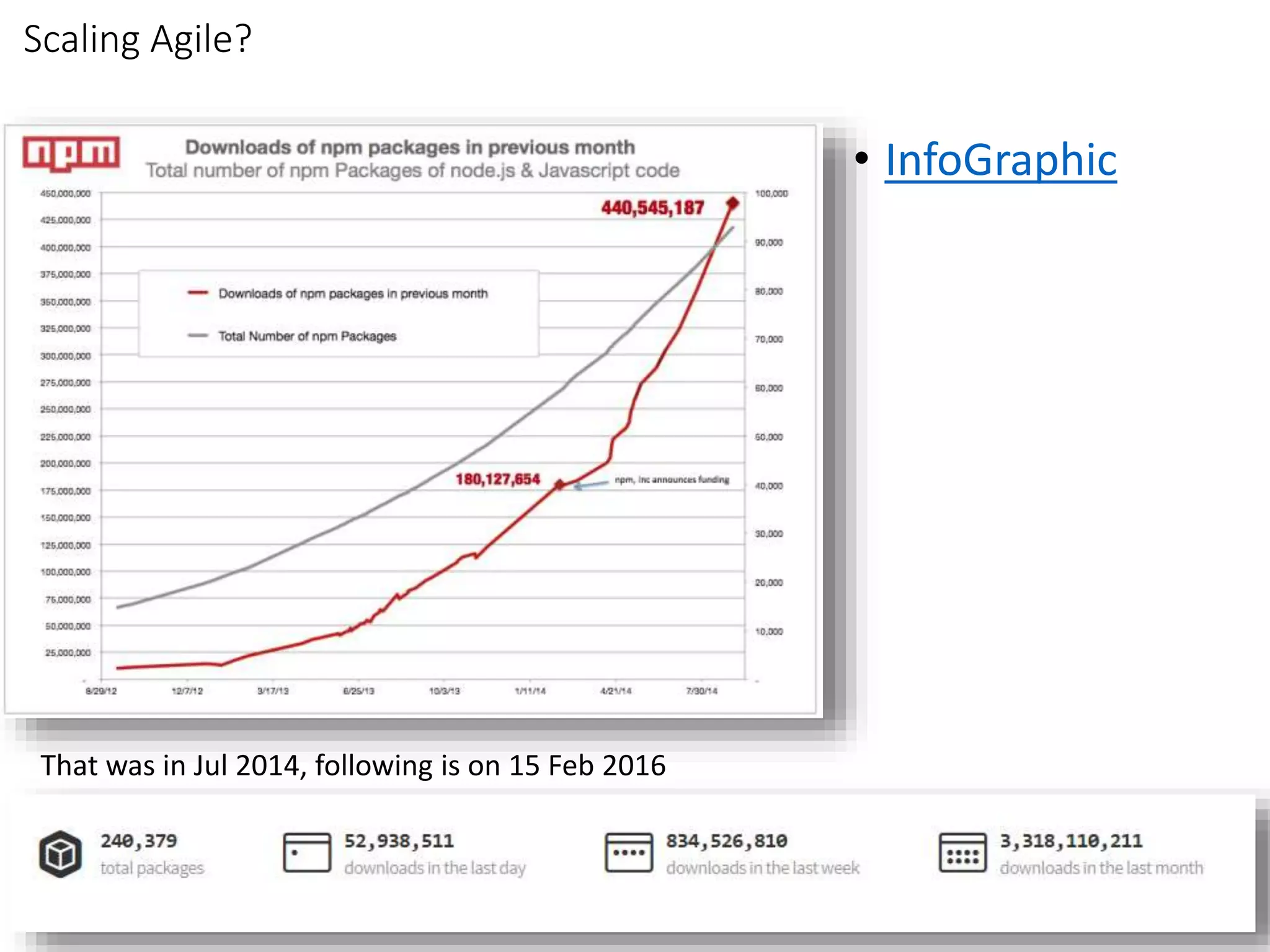This presentation discusses the author's experiences with fullstack development, highlighting its evolution and key technologies such as JavaScript, Node.js, and MongoDB. It emphasizes the advantages of modern frameworks like Angular and the benefits of adopting agile methodologies in software development. The presentation aims to inspire attendees to choose their direction in fullstack development and understand the value of emerging technologies.


